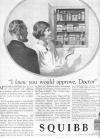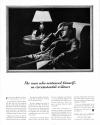Hidden in plain sight marketing prescription drugs to consumers in the twentieth century
- PMID: 20299640
- PMCID: PMC2853635
- DOI: 10.2105/AJPH.2009.181255
Hidden in plain sight marketing prescription drugs to consumers in the twentieth century
Abstract
Although the public health impact of direct-to-consumer (DTC) pharmaceutical advertising remains a subject of great controversy, such promotion is typically understood as a recent phenomenon permitted only by changes in federal regulation of print and broadcast advertising over the past two decades. But today's omnipresent ads are only the most recent chapter in a longer history of DTC pharmaceutical promotion (including the ghostwriting of popular articles, organization of public-relations events, and implicit advertising of products to consumers) stretching back over the twentieth century. We use trade literature and archival materials to examine the continuity of efforts to promote prescription drugs to consumers and to better grapple with the public health significance of contemporary pharmaceutical marketing practices.
Figures





References
-
- J. M. Donohue, M. Cevasco, and M. B. Rosenthal, “A Decade of Direct-to-Consumer Advertising of Prescription Drugs,” New England Journal of Medicine 357, no. 7 (2007): 673–681. - PubMed
-
- J. M. Donohue, “Direct to Consumer Advertising of Prescription Drugs: Does It Add to the Overuse and Inappropriate Use of Prescription Drugs or Alleviate Underuse?” International Journal of Pharmaceutical Medicine 20, no. 1 (2006): 17–24. DTC advertising of prescription drugs is, for the most part, a unique feature of American public health policy; although the European Union is currently debating a motion that would allow drug manufacturers to provide pamphlets of “nonpromotional” materials directly to consumers, apart from New Zealand, the United States remains the only country that explicitly permits the DTC promotion of pharmaceuticals. “Public Consultation (MLX 358): The European Commission Proposals on Information to Patients for Prescription Medicines,” available at http://www.mhra.gov.uk/Publications/Consultations/Medicinesconsultations... (accessed July 26, 2009)
-
- A. F. Holmer, “Direct-to-Consumer Prescription Drug Advertising Builds Bridges Between Patients and Physicians,” Journal of the American Medical Association 281, no. 4 (1999): 380–382. - PubMed
-
- B. Mintzes, M. L. Barer, R. L. Kravitz, et al., “Influence of Direct to Consumer Pharmaceutical Advertising and Patients' Requests on Prescribing Decisions: Two Site Cross Sectional Survey,” British Medical Journal 324 (2002): 278–279; D. A. Kessler and D. A. Levy, “Direct to Consumer Drug Advertising: Is It Too Late to Manage the Risks?” Annals of Family Medicine 5, no. 1 (2007): 4–5. - PMC - PubMed
-
- W. L. Pines, “A History and Perspective on Direct-to-Consumer Advertising,” Food and Drug Law Journal 54 (1999): 489–518; M. S. Wilkes, R. A. Bell, and R. L. Kravitz, “Direct to Consumer Prescription Drug Advertising: Trends, Impact, and Implications,” Health Affairs 19 (2000): 110–128; F. B. Palumbo and C. D. Mullins, “The Development of Direct-to-Consumer Prescription Drug Advertising Regulation,” Food and Drug Law Journal 57, no. 3 (2002): 423–443; J. Donohue, “A History of Drug Advertising: The Evolving Roles of Consumers and Consumer Protection,” Milbank Quarterly 84, no. 4 (2006): 659–699.
Publication types
MeSH terms
Substances
LinkOut - more resources
Full Text Sources
Miscellaneous

